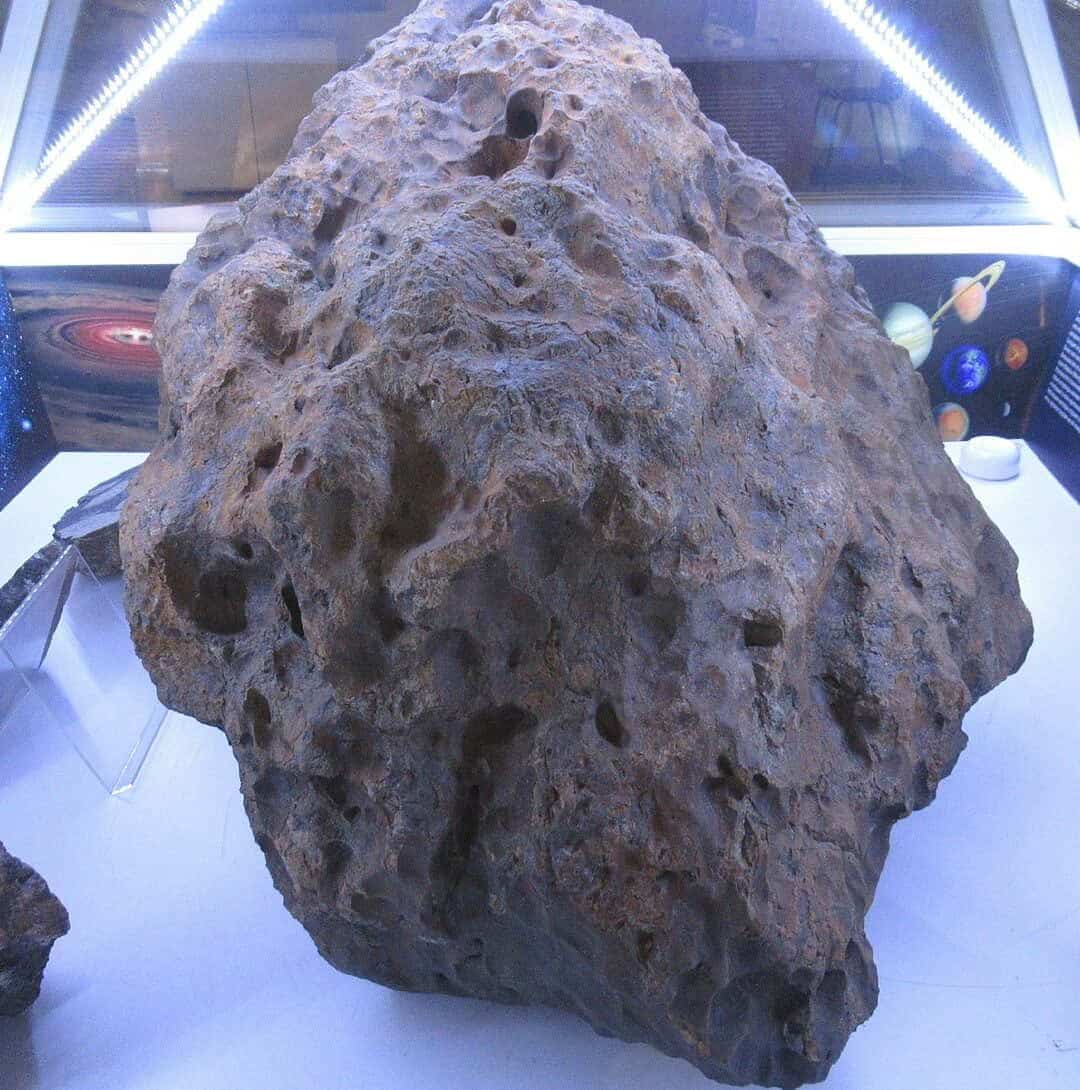The occurrence of the Chelyabinsk meteorite on February 15, 2013, along with the subsequent meteor shower, raised questions regarding our limited knowledge about meteorites. The loud noise and accompanying light effects left people perplexed, as they wondered about the origin of these phenomena. The unexpected fallout of stones from the sky, sometimes even taking the window frames along, added to the mystery surrounding this event.
Chelyabinsk meteorite and our dependable defense
The strength of this natural event can be likened to the detonation of a moderate-sized nuclear bomb. However, this “bomb” detonated at an elevation of approximately 20 kilometers, with only the reverberations of this detonation reaching the surface, resulting in shattered glass and the collapse of certain important structures.
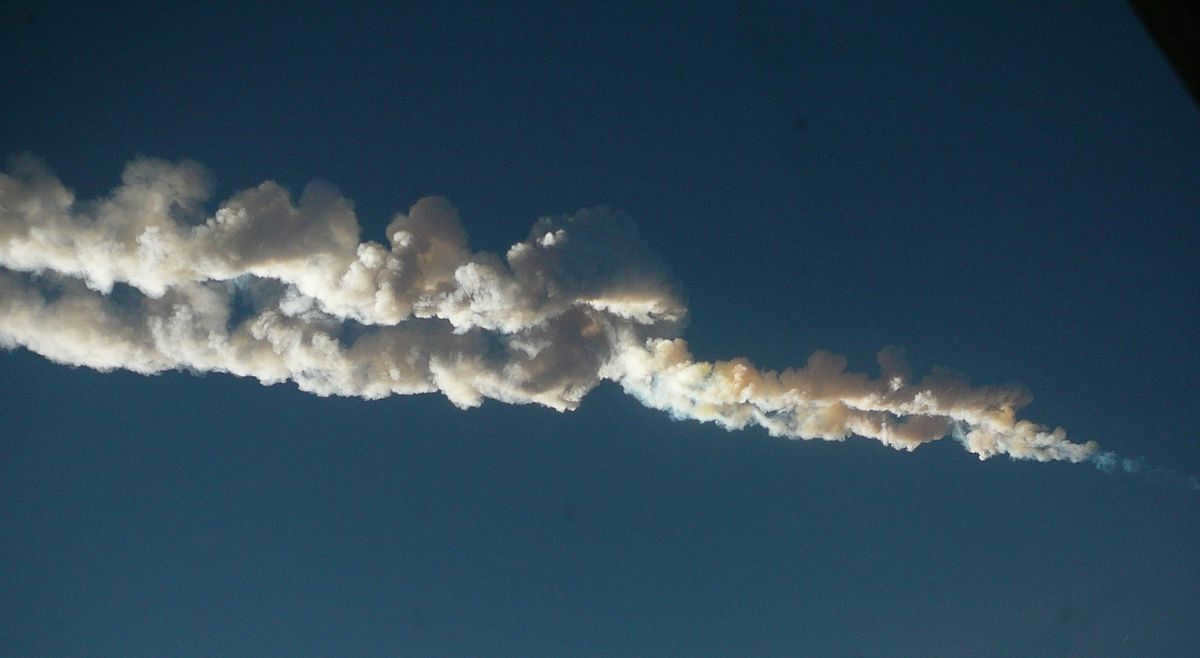
Why didn’t the asteroid meteorite, with its immense power, crash into the city? It was all thanks to our trustworthy shield – the atmosphere. How did the meteorite, which was initially as big as a seven-story house and weighed around 1,000 tons, behave?
As the space object hurtled through the Earth’s atmosphere at an incredible speed of over forty kilometers per second, at an altitude ranging from 100 to 120 kilometers, it encountered a constant barrage of air molecules. These collisions gradually eroded the outer layers of the meteorite. As the meteorite descended into the lower and denser regions of the atmosphere, the destruction intensified. The continuous impacts caused the surface layer of the meteorite to heat up to temperatures reaching several thousand degrees. While the meteorite streaked through the atmosphere at cosmic velocities, the debris from its disintegration created a blazing tail, and at the forefront of the falling meteorite, a luminous fireball known as a bolide formed.
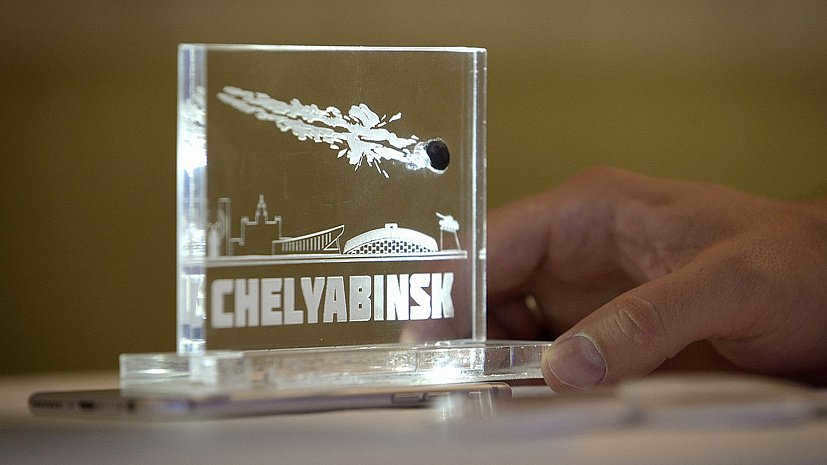
A fragment of a meteorite, with a diameter of several meters, kept moving at an incredibly fast speed, producing light, sound, and causing destructive consequences as it traveled. Within a few seconds, it made its way towards Lake Chebarkul and plunged into its depths, breaking through the ice and leaving behind a hole approximately eight meters wide.
The most renowned meteorites from Russia
Prior to discussing our Ural meteorites, it is important to mention the most famous extraterrestrial visitors to Russia – the Russian ones.
Tunguska meteorite
Over a century ago, an incident occurred in the region between the tributaries of the Podkamennaya Tunguska River that continues to captivate the minds of scientists, explorers, and adventurers. The true nature of the Tunguska meteorite remains a mystery to this day.
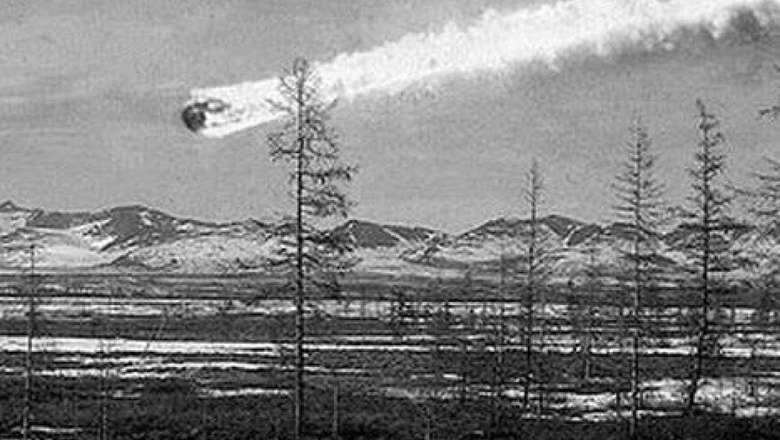
During the early hours of July 30, 1908, an extraordinary event occurred in the southern region of Central Siberia. Many spectators witnessed a mesmerizing spectacle: a massive and radiant object soared across the sky. Some described it as a glowing sphere, while others likened it to a blazing cluster of spikes in reverse, and a few even perceived it as a burning log. This luminous entity traversed the heavens, leaving a trail reminiscent of a descending meteorite. Its passage was accompanied by powerful auditory phenomena that were observed by numerous eyewitnesses within a radius of several hundred kilometers. These phenomena instilled fear and, in some areas, even sparked panic.
The entire neighborhood was rocked by a tremendous and deafening explosion. The force of the blast was so immense that it could be heard from up to 1200 km away from the site of impact. The sheer power of the explosion caused trees to crash down as if they had been forcefully crushed, windows shattered and sent shards of glass flying through the air, and rivers became filled to the brim with water. Even at a distance of over a hundred kilometers from the epicenter, the ground trembled and window frames were shattered.
Subsequent investigations revealed that the shockwave in the dense taiga forest toppled trees within a radius of approximately 30 kilometers. The explosion’s intense light flash and the emission of scorching hot gases sparked a massive forest fire, which consumed vegetation within a radius of several tens of kilometers.
Shortly after the explosion, there was a disturbance in the magnetic field of the Earth. This disruption, which lasted for approximately four hours, resembled the geomagnetic disturbances that were observed after the detonation of nuclear devices in the Earth’s atmosphere.
Within a few days of the enigmatic explosion in the taiga, peculiar events took place worldwide. During the night of June 30-July 1, over 150 locations in Western Siberia, Central Asia, European Russia, and Western Europe experienced a near absence of darkness as luminous clouds could be clearly observed in the sky at an altitude of around 80 km.
Afterwards, the intensity of the “luminous nights of the summer of 1908” significantly declined, and by July 4th, the celestial spectacle was mostly concluded. Nevertheless, various atmospheric light phenomena were observed until the 20th of July.
In 1911, an expedition led by V.Y. Shishkov was dispatched to the location of the impact. Although they did not discover the exact site of the catastrophe, they did find a substantial forest disturbance in the vicinity of the Nizhnyaya Tunguska River, the cause of which remains unexplained.
In 1921, the first expedition to search for a meteorite was led by L.A. Kulik. However, that year only provided a rough estimate of the location of the catastrophe. It wasn’t until 1927 that Kulik actually visited the site of the catastrophe for the first time. The expedition confirmed that the forest collapse had a radial pattern, indicating a powerful explosion. In 1925, A.V. Voznesensky, the Director of the Irkutsk Meteorological Observatory, analyzed records from various Siberian meteorological stations and concluded that the Tunguska meteorite had exploded 20 kilometers above the ground. Unfortunately, this conclusion was disregarded. In 1928, Kulik’s expedition returned to the fall site with the goal of finding meteorite debris, but they were unsuccessful. The third expedition in 1930 also yielded no results.
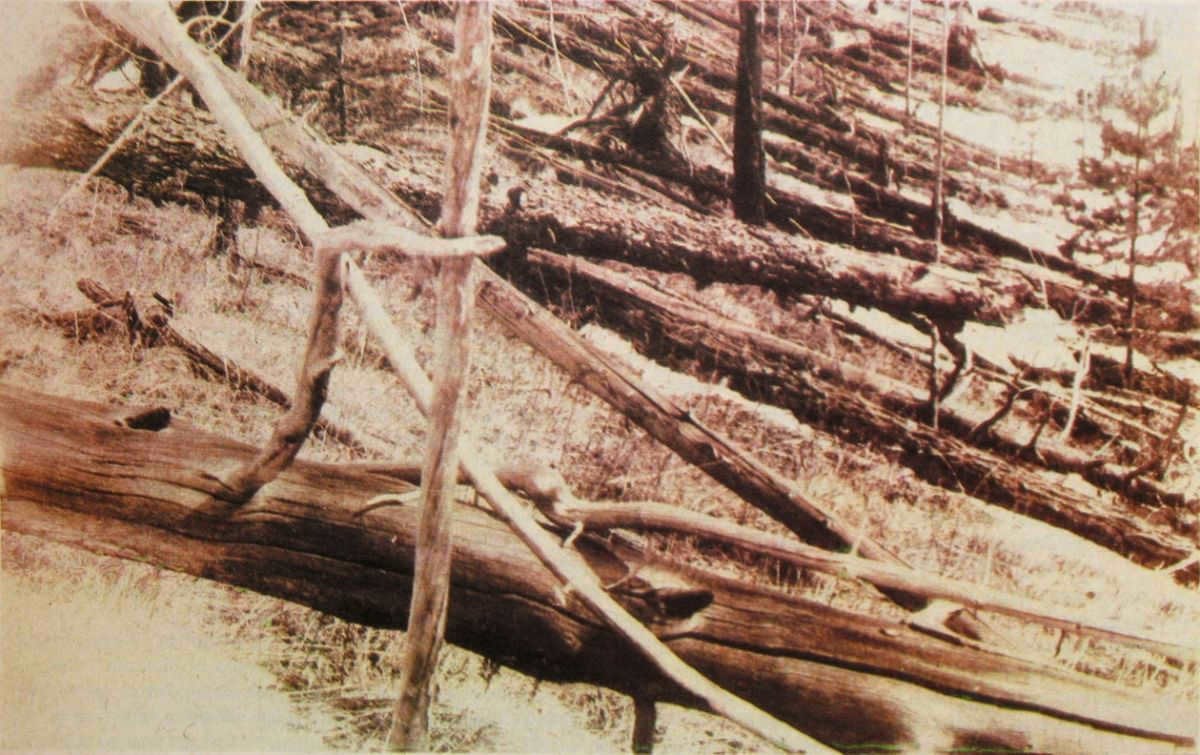
The explosion, shrouded in mystery, did not result in a visible crater. However, the vast taiga spanning over 2100 square kilometers suffered from scorching and collapse. Many scientists speculate that this catastrophe was caused by the detonation of a celestial body several kilometers above the Earth’s surface. On Earth. The contentious question remains whether it was a comet fragment or a meteorite.
There is no consensus regarding certain enigmatic phenomena. For instance, not a single fragment of the impacting object has been discovered thus far.
Sikhote-Alin meteorite
On February 12, 1947, at 10:38 a.m., a massive fireball with a long smoke tail was spotted in the sky over the Sikhote-Alin taiga, located in the northern region of Primorye. The bright luminescence and the rumbling sound of the unidentified object approaching the Earth resembled a powerful weapons volley against the backdrop of the morning sky. At that moment, only a few realized that they were witnessing an extremely rare and unique event – the fall of a gigantic meteorite.
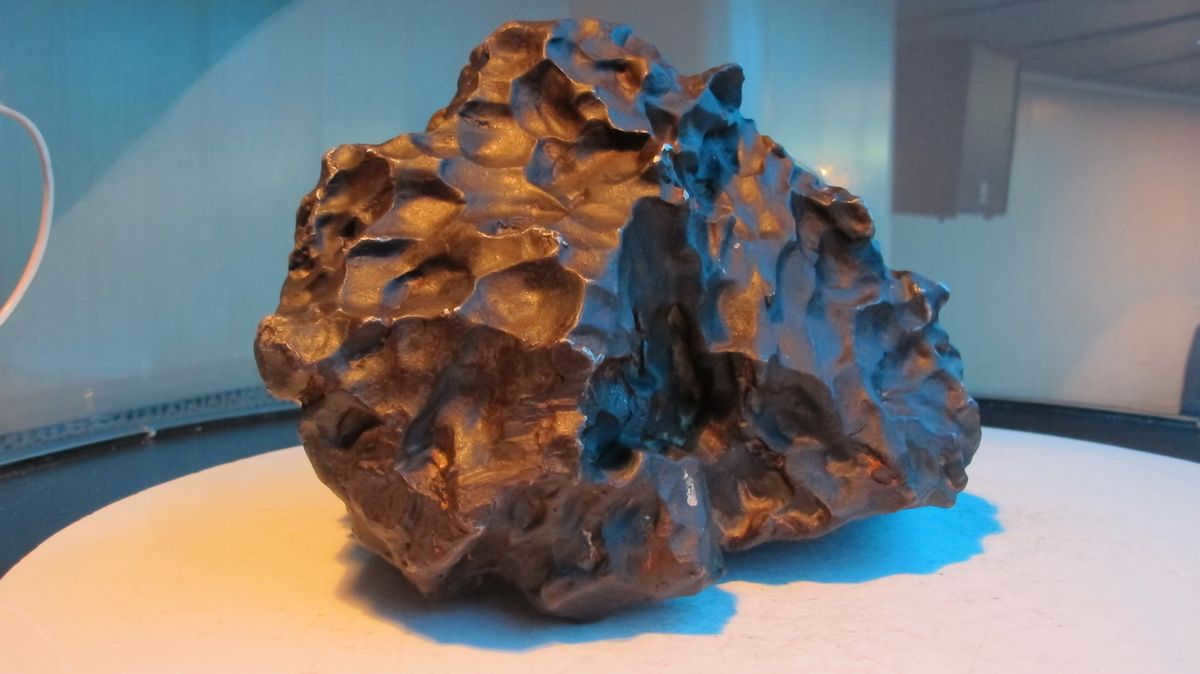
The meteorite’s descent was witnessed by people within a 350-kilometer radius, with the sound of its fall being heard even farther away, up to 400 km. Its landing site was in the remote and impenetrable taiga, specifically in the vicinity of Dalnerechensk. Subsequently, this extraterrestrial visitor came to be known as the Sikhote-Alin meteorite..
The first individuals to discover the crash site were pilots from the Far Eastern Geological Department who were returning from a mission. They promptly reported the news to the authorities in Khabarovsk. Within just ten days, a team of geologists was dispatched to the area.
The first person to discover the fallen meteorite was beekeeper Nikolai Kushnarev. He then assisted the geologists in reaching the site, which had quickly become a solid mass of snow, soil, and iron. Later, he resided in the taiga at his hunting camp when he heard a sound resembling the firing of artillery cannons. He immediately rushed to the source of the sound and observed a multitude of deep craters, uprooted and broken trees, and fragments of iron, although he never realized that it was a meteorite.
Subsequently, scientists determined that the largest fragment of the meteorite weighed 1745 kilograms, and the iron precipitation covered an area of up to 50 square kilometers. This was an extensive iron meteor shower, surpassing all previously known meteorite “rain” events in many aspects. Over a hundred tons of meteorite debris fell, of which approximately 27 tons were collected and added to the collection of the Academy of Sciences.
Meteorites in the Ural Mountains
Every year, numerous small meteorites make their way to us, often going unnoticed. However, it is not uncommon for larger stones, like the renowned Chelyabinsk meteorite, to also make an appearance – occurring approximately once every 20 to 30 years.
The Sterlitamak Meteorite in Bashkortostan
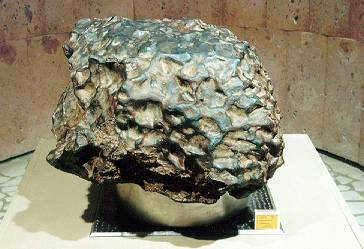
The experts from the Ural branch of the USSR Academy of Sciences discovered multiple meteorite fragments weighing up to 500 grams on the surface. Additionally, two metal blocks weighing over 10 kilograms were found when the excavator bucket reached a depth of 8 meters. However, scientists believe that the majority of the meteorite is located even deeper underground. This particular meteorite has been named “Sterlitamak.”
Meteorite “Shirokovsky” (Perm region)
According to I.A. Yudin’s book “Meteorites of the Urals”.: “On February 1, 1956, at 8:30 a.m. local time, the residents of the Nizhneturinsk district witnessed a rare and fascinating natural phenomenon: the passage of a bolide – a luminous ball with a fiery tail – across the sky. The bolide traveled in the northwest direction, passing over the settlements of Is, Kosya, and others.” Eyewitnesses reported hearing explosion-like sounds, with glass rattling and the walls of buildings trembling..
The meteorite landed on the western side of the Urals in the Shirokovskoye Reservoir. It fell 150 meters away from the shoreline. It broke through 80 centimeters of ice and sank to the bottom of the reservoir. A round hole with a diameter of 42 centimeters, and ribbed walls, was created in the ice. Interestingly, similar to the Chebarkul meteorite. The Chebarkul meteorite Just like the Chebarkul meteorite, the search for the space rock by divers was unsuccessful.
Tashatkansky meteorite (Tyumen region)
One of the earliest recorded mentions of meteorites in the Ural region can be found in the writings of historian, cartographer, and architect Semyon Remezov. Semyon Remezov documents the return of Ermak in 1584 after his final expedition along the Irtysh River. During their journey, the Cossack leader and his entourage came across a large meteorite near the town of Tashatkan in the Trans-Ural region. This meteorite was described as a majestic stone from the heavens, resembling a carriage with sledges. It had a distinctive scarlet color and was believed to be the source of cold, rain, and snow in the area. Yermak and his companions were in awe of this extraordinary natural phenomenon, recognizing it as a testament to God’s power.
Ozernoye meteorite (Kurgan region)
In the summer of 1983, near the “Ozernoye” farm of the “Zauralsky” state farm, a shepherd named N.L. Khismatullin stumbled upon an unusual stone. In 1985, he reported his discovery to the Ural Commission on Meteorites. A member of the commission, V.N. Loginov, immediately went to the state farm and brought the stone to Sverdlovsk. The meteorite was then examined and given the name “Ozernoe”.
Ural meteorite (Kurgan region)
In 1984, the Ural Commission on meteorites received another extraordinary celestial rock from the Kurgan region, weighing 10 kg. This particular meteorite was discovered by a collective farmer named L.A. Orlov in a wheat field near the village of Ural. With its dark brown color, rusty appearance, and significant weight, it immediately caught Orlov’s attention as something out of the ordinary. Intrigued by his find, Orlov decided to bring it to his yard and seek the expertise of scientists for further analysis.
Mokrousovo Meteorite (located in the Kurgan region)
The meteorite, known as Mokrousovo, was found in the Mokrousovsky district of the Kurgan region. It was discovered in a field by tractor driver V.A. Vershinin in the summer of 1968. However, it was not until 1983 that V.A. Vershinin’s father, A.G. Vershinin, sent the stone to the Ural Meteorite Commission in Sverdlovsk. A.G. Vershinin estimated that the stone initially weighed about 2 kg, but when it was examined by Professor Yudin, it only weighed 800 grams. It appears that pieces broke off and the extraterrestrial substance dispersed. The exact time of the meteorite’s fall has not been determined. Professor Yudin believes that the specimen had been in the ground for a long time, as its surface showed signs of severe oxidation.
Back in 1965, the Kargapolye meteorite was discovered on the eastern side of the Middle Urals. This remarkable find was located in a meadow, nestled in a hole about 10-15 cm deep and surrounded by lush grass. It is believed that the meteorite had descended from the sky around 1942 and had been resting in the field for approximately two decades. Interestingly, in October of that same year, the people living in this region witnessed a dazzling bolide streaking across the sky, accompanied by intense auditory sensations.
Meteorite Sverdlovsk (Sverdlovsk region)
In late 1985, an engineer named V.F. Korotayev from Sverdlovsk was on a business trip in the Kamyshlovsky district. While near the Pulnikovo settlement, he came across a large reddish stone that appeared to have been brought there during field clearing. Korotayev decided to bring the stone back to Sverdlovsk for analysis. The tests confirmed that it was a chondrite meteorite weighing 4.5 kg. This discovery marked the first meteorite ever found in the Sverdlovsk region, hence it was named Sverdlovsk.
Kunashak meteorite (Chelyabinsk region)
The Kunashak meteorite made impact on June 11, 1949. Its name was derived from the village of Kunashak, which is located in the Chelyabinsk region where the meteorite was discovered. At approximately 8:20 AM local time, the meteorite passed over the city of Sverdlovsk. There was a slight trembling of the ground in Syserti. In Nikolskoye village, Sysert district, the shockwave caused windows to shatter in one of the houses.
One of the fragments of the meteorite fell into Lake Chebakul, which is situated 50 kilometers north of Chelyabinsk. A total of about twenty fragments of the meteorite were recovered, weighing nearly 200 kilograms. The Kunashak meteorite is relatively young, estimated to be only 720 million years old.
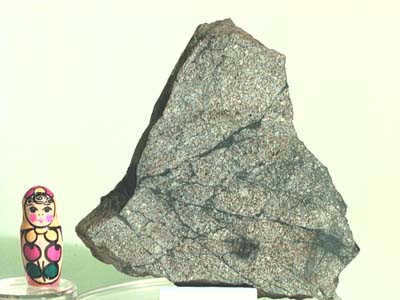
Not only can you find fragments of the Kunashak meteorite in Moscow, but also in museums located in Chelyabinsk, Yekaterinburg, and even in the capital city of Vietnam. This remarkable piece of space debris was once presented as a gift to Ho Chi Minh during his visit to the Urals.
Okhansky meteorite (Perm region)
This celestial messenger descended as a substantial cascade of stones at 12:30 a.m. on August 30, 1887 in the former Okhansky district of Perm. Okhansky uyezd, Perm province.. Shortly after its descent, during a regular gathering of the Russian Physico-Chemical Society at St. Petersburg University, the esteemed chemist D.I. Mendeleev informed the assembled scientists that samples of the meteorite, which had fallen in the Perm province, had been received and were already undergoing chemical analysis.
The circumstances surrounding the descent of the Okhan meteorite were recounted in considerable detail by the manager of the Ocher plant, Fyodor Budischev, in his correspondence with the head of the Ekaterinburg railroad station, D.I. Lobanov:
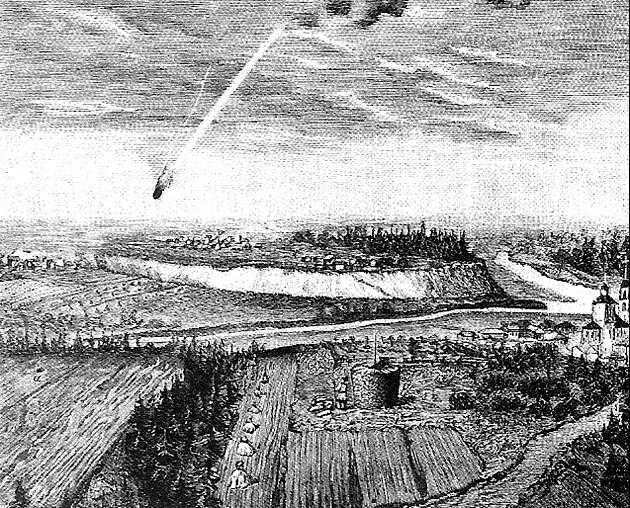
Shortly after the celestial stone fell, numerous samples of meteorites of varying sizes and weights were collected. The largest piece landed near Tabory village, creating a hole approximately one and a half meters deep. It wasn’t until the following day that the stone was removed from the pit and transported by boat to Okhansk town.
Severo-Kolchimskiy meteorite (Perm region)
The Severo-Kolchimskiy meteorite was discovered in 1965 during a geological expedition. It was found buried in loamy soil at a depth of 10-15 cm, nestled among the roots of an uprooted spruce tree. An experienced geologist noticed a peculiar black rounded stone while examining a nearby outcrop, which stood out starkly against the light gray sedimentary rocks. The exact time of the meteorite’s fall is unknown, but there are speculations that the North Kolchima meteorite descended approximately a century ago.
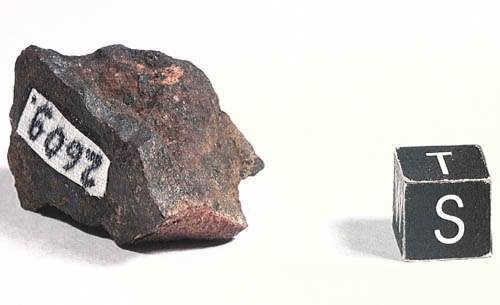 Meteorite impact in the Beloretsk area (Bashkortostan)
Meteorite impact in the Beloretsk area (Bashkortostan)
In the early 20th century, in the Beloretsky area near the Uzyan settlement, three workers from a factory that extracted raw materials for molding products at the “White Clay” deposit witnessed the fall of a celestial stone. The husband of one of the workers had recently lost his wife, and he perceived this event as something supernatural, believing that it was a punishment for his earthly sins.
Meteorite “Red Key” (Bashkortostan)
On May 4, 1946, a meteorite named “Red Key” fell near the Rodnik settlement in the Karmaskalinsky district of Bashkiria. A local beekeeper and his wife were digging the ground for potatoes in their vegetable garden when they heard a loud sound resembling a cannon shot. The beekeeper, who had fought in the imperialist war of 1914, immediately recognized the sound and commanded his wife to take cover. However, there was no explosion. Instead, the couple discovered that the snow in a nearby hollow had not melted. Upon closer inspection, they found a stone on the loosened ground and decided to hide it “just in case” on the stove.
A meteorite discovered in the Aurgazinsky district of Bashkortostan
There is intriguing information regarding the discovery of a meteorite within the confines of the Aurgazinsky district. While on a work assignment in the summer of 1984, journalist R.KH. Nasyrov had a meeting with I.I. Nikitin, a history instructor at Meselinskaya Secondary School I.I. Nikitin. Isaak Ivanovich provided the following details. During field work, students from Zhuravlevka village (located within the central area of the Michurin Collective Farm) stumbled upon two stone fragments that did not resemble the local rocks. They were able to identify the fragments as a meteorite. One of the fragments weighed around 2.5-Z kg, while the other, found approximately one kilometer away from the first, weighed 500 grams. These fragments are black in color, with a matte texture, and exhibit depressions in the form of micro holes measuring 0.5-1.0 cm in diameter. The meteorite fragments have yet to be examined by experts.
Staroye Boriskino (Orenburg region)
The Orenburg region saw the landing of an unattractive meteorite on April 20, 1930, near the village of Staroye Boriskino, giving it its name. This particular meteorite gained attention due to the presence of the mineral chlorite, a silicate with water content, thus establishing the existence of crystallization water in meteorites for the first time. This groundbreaking discovery was made by the Soviet petrographer L.G. Kvasha. Subsequently, crystallization water was also found in the Orhei meteorite and other carbonaceous meteorites.
Staroye Pesyanoye is the name of a meteorite that landed in the Kurgan region on either October 2 or 3, 1933. It had been flying over Chelyabinsk before it finally ended its journey in the northern part of Staroye Pesyanoye village, from which it derived its name. The meteorite exploded in the sky and fell down as a meteor shower, partially landing in the shrinking Lake Manyas, situated west of the village. Lake Manyas.
Sources:
- Meteorites in the Ural Mountains – https://welcome-ural.ru – Authors: Dmitry Voroshchuk and Svetlana Zhidkova
- Wikipedia
- Meteorites across the Ural Mountains – Author: Vladislav Grigorievich NEPOMNYASHCHY
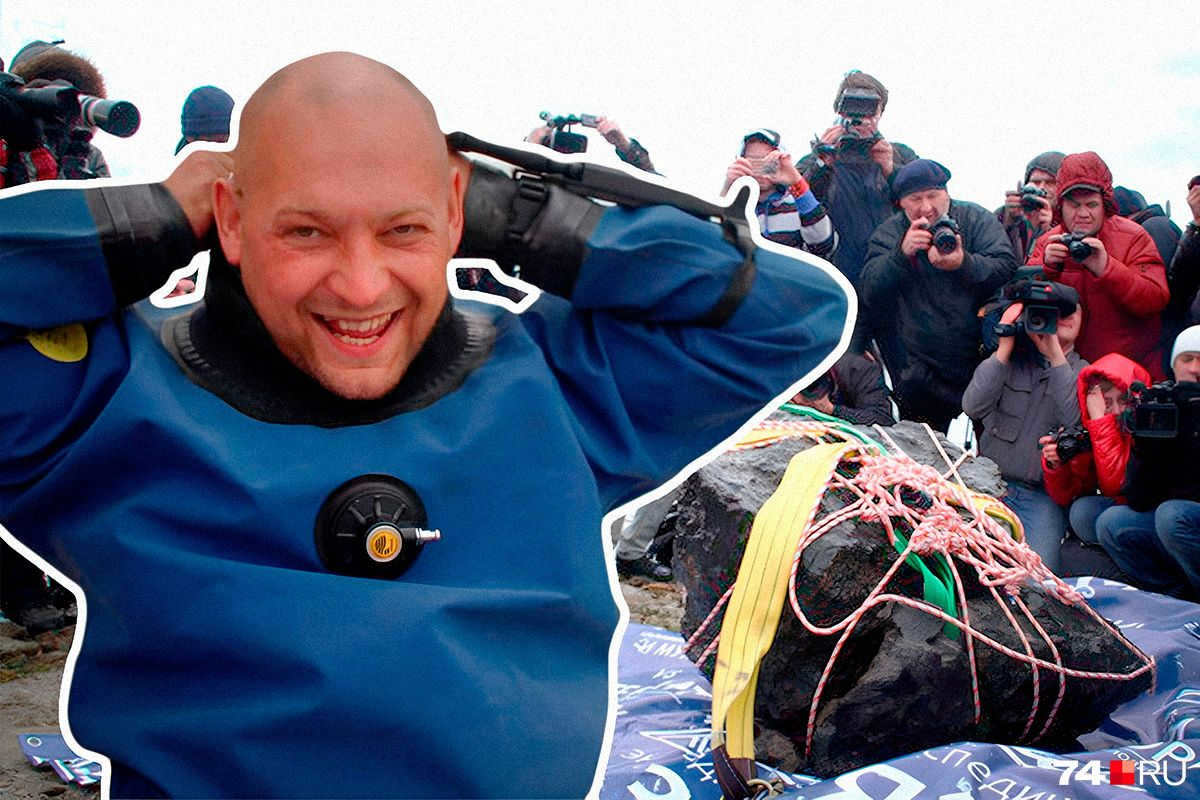
Exactly a decade ago, on February 15, 2013, a meteorite by the name of Chelyabinsk descended upon the Urals. Scientists assert that it lacked the capability to annihilate the planet, but it certainly possessed the potential to obliterate a town of moderate size. By some fortuitous twist of fate, however, the celestial “rock” opted for a path towards Lake Chebarkul: after wreaking havoc in Chelyabinsk and instilling fear in the neighboring city of Yekaterinburg, the meteorite collided with the reservoir. Astonishingly, thousands of windows shattered, walls crumbled, yet not a single individual lost their life; only injuries were sustained.
After the initial shock wore off and people began to realize the extraordinary nature of the event, it became evident that the meteorite was a valuable commodity akin to gold. Fragments of the extraterrestrial rock were found scattered throughout the forests and fields, with the largest piece being retrieved from the depths of Lake Chebarkul. The task of recovering the meteorite was undertaken by the Yekaterinburg-based company “Aleut – special works service” on behalf of the authorities. The divers faced both objective and mystical challenges in their search and retrieval efforts, and there are still other items remaining at the bottom of the lake. As the anniversary of the meteorite’s fall approaches, journalist 74.RU spoke with Nikolai Murzin, the founder of the company and the leader of that historic expedition, to learn more about how they searched for and recovered the meteorite.
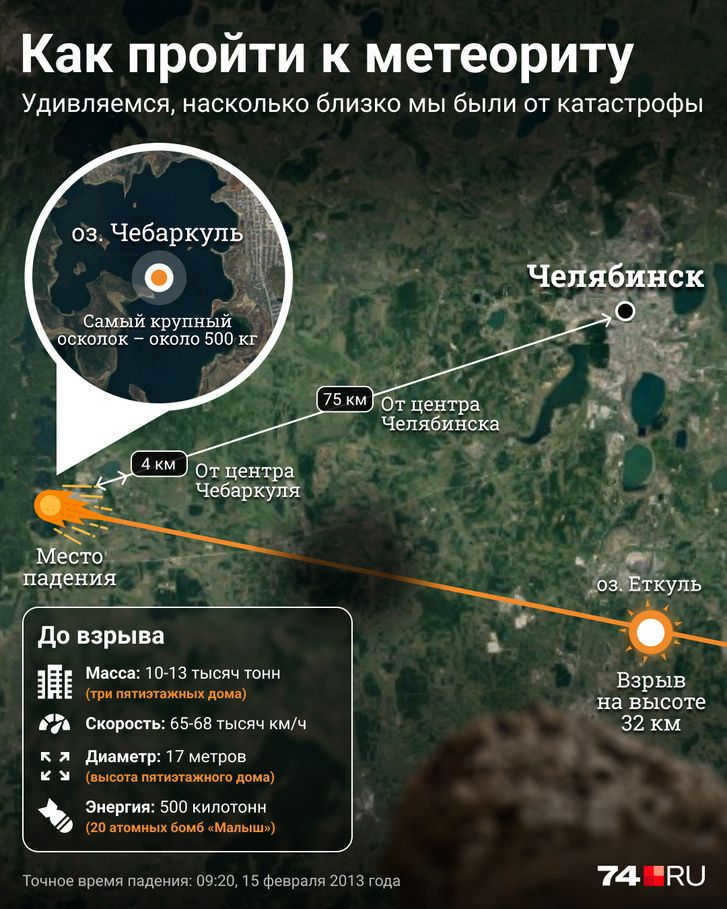
“The excavation lasted for a month and a half”
– Nikolai Eduardovich, the meteorite fell during winter, and the largest fragment was retrieved in the autumn. Why wasn’t it done immediately?
– The task always appears easy once it is completed. As I recall the incident, the military personnel were the first to arrive. They jumped in and nearly drowned their diver. Then the rescuers arrived: they jumped in and nearly drowned their own staff member. We observed this situation and even then we realized that we would require specialists with experience in handling complex and hazardous work.
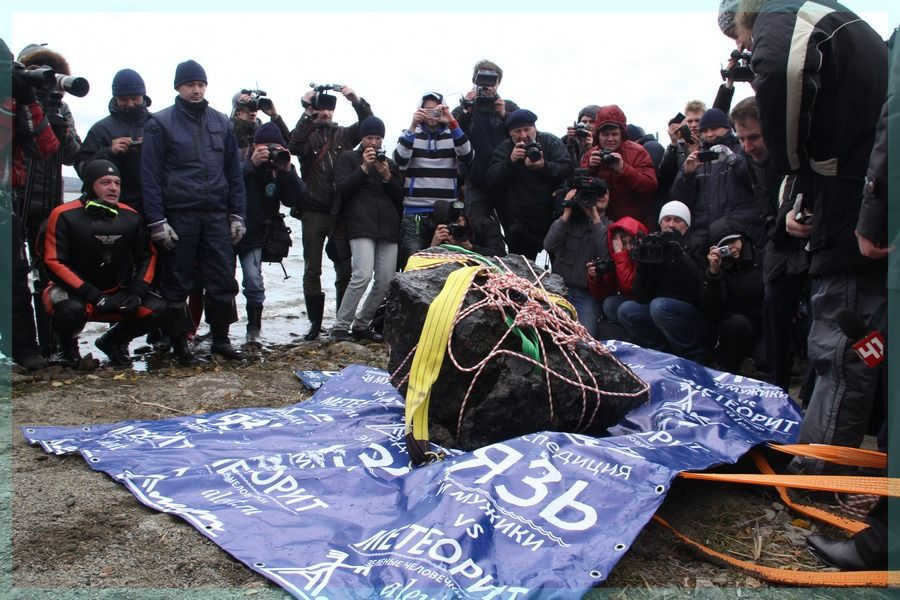

— How did you determine the exact location of the meteorite in the lake?
– We arrived, gathered all the data, conducted research. We had discussions, but they proved to be useless due to the lack of references. We met with Nikolai Lavrentievich Melnikov (a local resident whose house camera recorded the moment of the meteorite’s fall – Editor’s note.). He, being a former military man, took azimuths (the angle between the direction to the north and the selected object – Editor’s note.) from the mine to the coastal landmarks. We plotted them on the map and obtained a point. Then we were given an aerial photograph – we verified the point once again, converted it into geographic coordinates, and started working in that location.

Using an echo sounder, we were able to detect the signal and subsequently spent a month and a half excavating a hole to reach it. The water depth was approximately 9 meters, where the silt began. In such conditions, visibility was reduced to zero. We then had to dig an additional 9 meters through the silt, sometimes even deeper. Catching the stone itself was relatively easy. We carefully wrapped it in soft slings and used a winch to lift it up. The weight of the stone, 654 kilograms, was not a significant burden for a diver, considering we had to lift something 800 times heavier.
On February 15, 2013, a meteorite weighing approximately 10,000 tons entered Earth’s atmosphere, traveling at a speed of around 19 km/s. The celestial object detonated at an altitude of roughly 25 kilometers near Chelyabinsk, resulting in a meteor shower. The explosion released an energy equivalent to about 500 kilotons of TNT. Fragments weighing a total of 654 kilograms landed in Lake Chebarkul. The largest fragment, weighing approximately 500 kilograms, is currently housed at the State Historical Museum of the Southern Urals.
— I recall that there used to be a floating platform on the lake, from which divers would descend.
A special platform measuring 6 by 8 meters was installed to serve as a hangar for divers and equipment. The platform was securely anchored to the bottom and had a carrying capacity of 6 tons. This was necessary because the platform needed to support not only the surface equipment weighing one and a half tons, but also the underwater structures which added another three tons to the load.
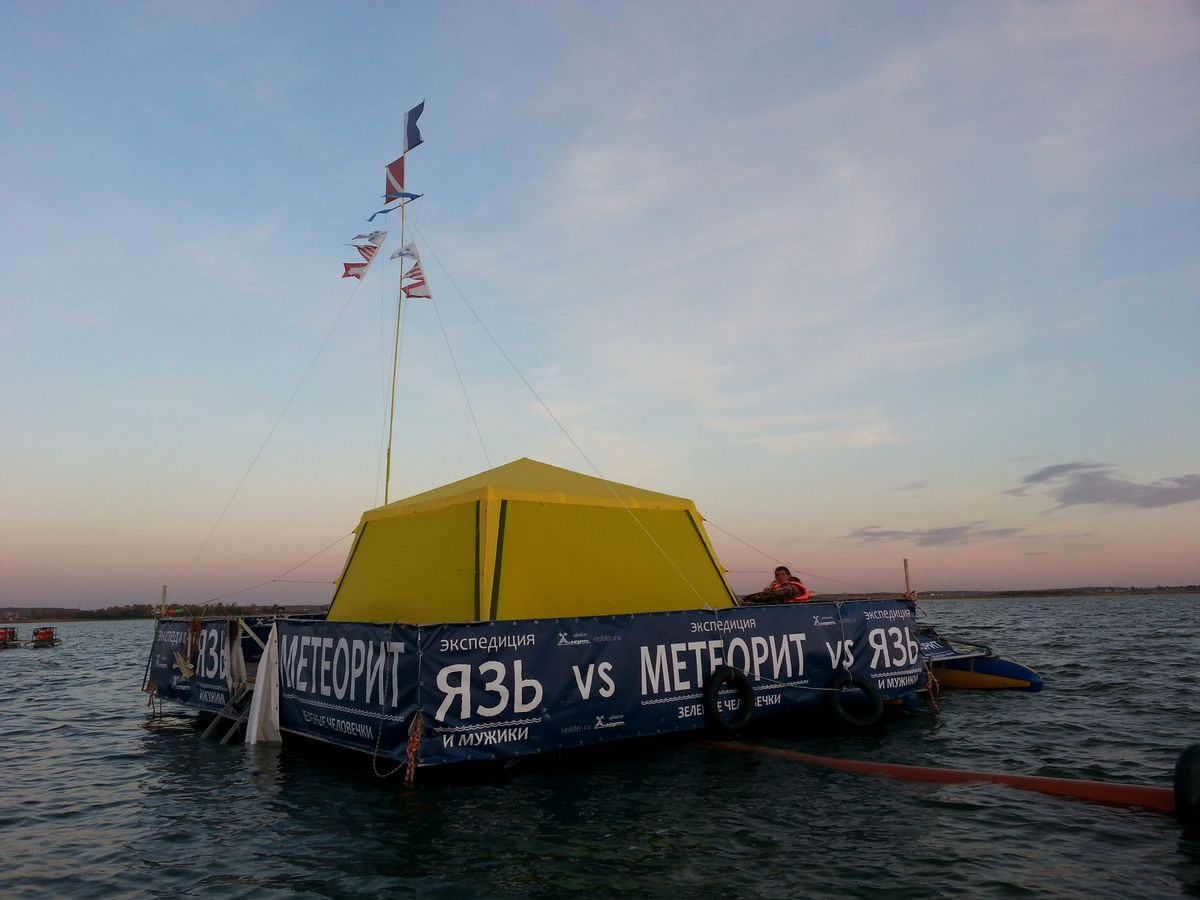

– In other words, we were relocating it from one spot to another. Chebarkul is a recreational lake, so it was important to carefully pump out the sediment before the work. When you remove something from the water, it can harm the plankton, so we had to assess the potential damage to the aquatic ecosystem.
Overall, the lake remains unchanged – the water remains in its original position, silt and nutrients have not been eliminated, and plankton has not been affected. The removal of a foreign object can be viewed as a form of lake cleansing.
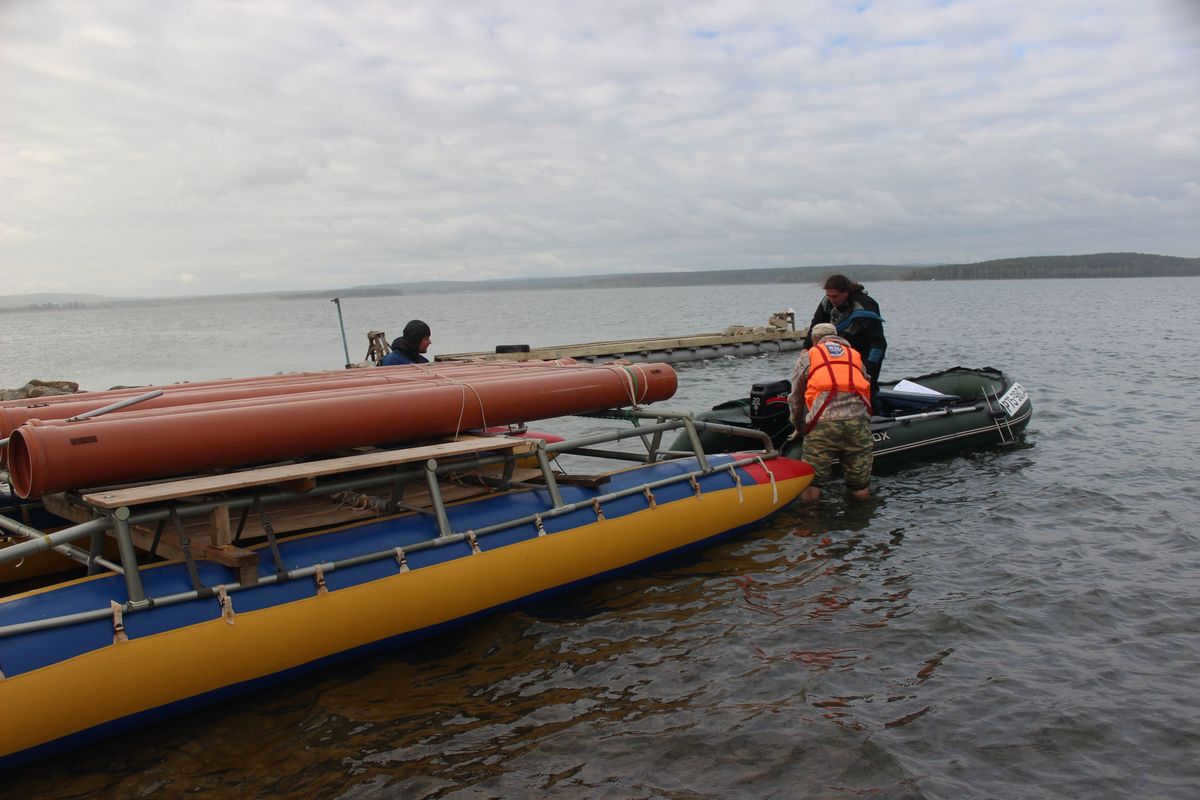
– Have you encountered any interference from amateurs who were collecting fragments following the meteorite’s fall?
– No, the initial excitement around collecting pebbles from the meteorite’s fall has already died down. However, we did have to ask some people on motorboats to leave. Fortunately, we were later joined by officers from the GIMS (State Inspectorate for Small Vessels of the Ministry of Emergency Situations of Russia) and rescuers. They ensured that the boats did not disrupt the divers’ work. We are extremely grateful to them for protecting us from curious individuals.
However, an unexpected incident occurred. Upon our arrival, we were astounded to find all of our underwater equipment in disarray. The equipment had been overturned, bent, and the slings had been cut. It seemed as though someone had mistakenly believed that we were using this location to store the rocks we had discovered. In reality, this area was solely used for the pump exhaust. As a result, we had to allocate a significant amount of time to repair the damages.
— Did you encounter any unforeseen circumstances?
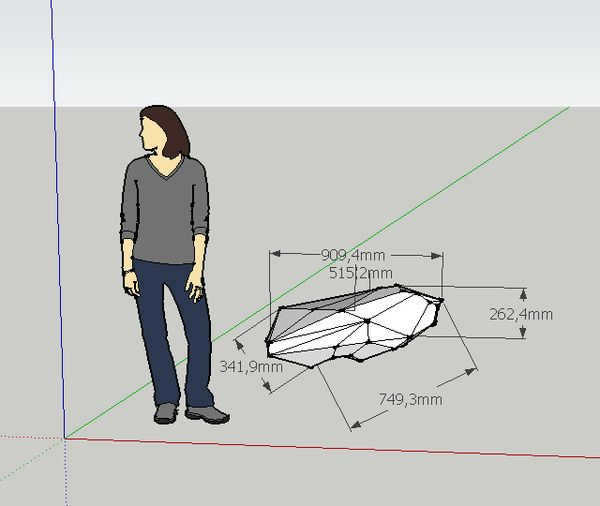
“There exist individuals who have faith in stone rockets.”
– “It is a well-known fact that numerous individuals still hold the belief that the object in question was not a meteorite, but rather a rocket. What are your thoughts on this hypothesis and other alternative theories?”
– “Why not? In the past, stone axes were used. There are people who have faith in stone rockets. Moreover, we found the explanations provided by ‘experts’ quite satisfying, such as the absence of stones and the tales about extraterrestrial beings – green men (smiles). The locals had no doubts that some of them are nestled at the bottom, in close proximity to the stone. We did not even engage in arguments – our positive mindset greatly assisted us in our work.”
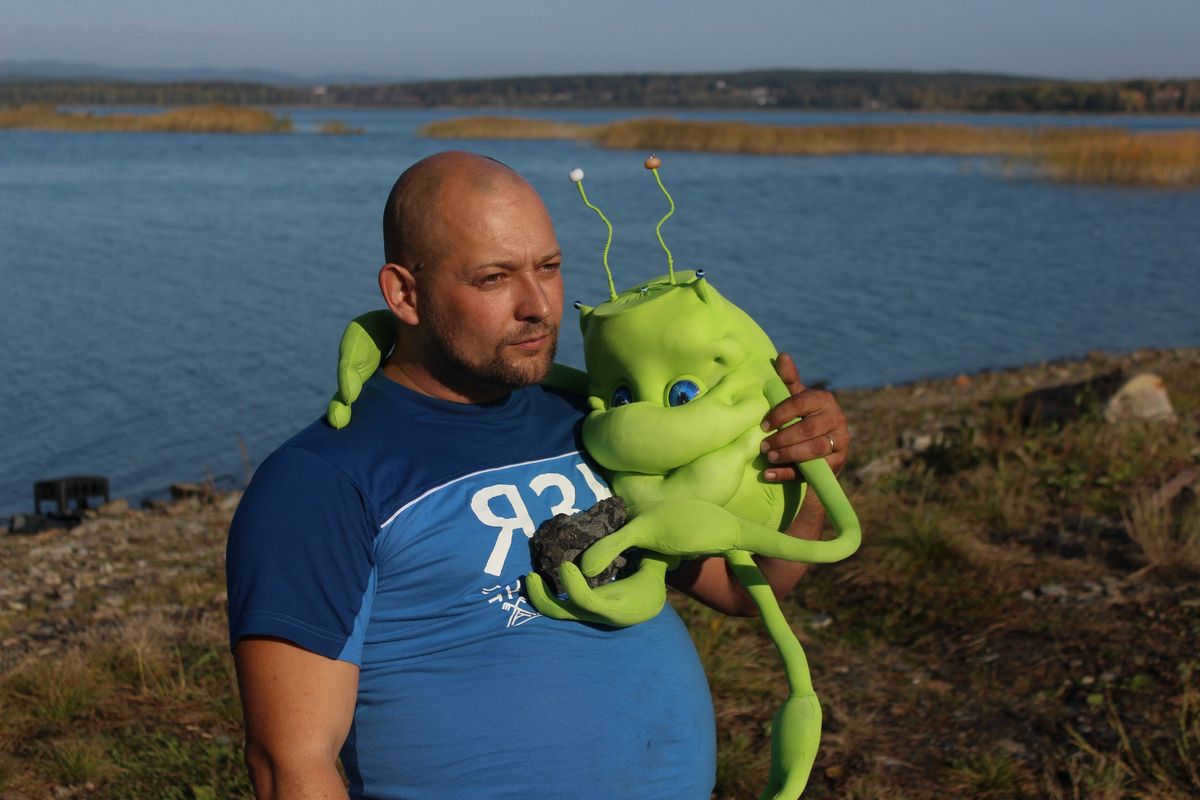

There were numerous speculations. It was rumored that the stone had been discovered and now they were simply laundering money. We chose not to acknowledge it. When individuals who are unfamiliar with the intricacies of diving work begin discussing its speed and cost, it becomes impossible to engage in a discussion.
From the moment we spotted the meteorite on the equipment, we had no doubts whatsoever. We knew that we simply had to get to work. On the day the probe detected the meteorite, there was an element of mysticism. Two out of the three pumps that were supposed to drain the sludge malfunctioned. The guys joked that the sentient sapropel didn’t want to let go of the meteorite.
– How did the officials respond? Did they demand, prohibit, or push for anything?
– There was no specific reaction from the officials. The only issue was that the start of the work was delayed because they had to wait for approval from Rosrybolovstvo for a long time. The situation arose because the customer did not prioritize obtaining approval when the tender was conducted. However, we still managed to receive it faster than usual. Typically, the waiting period is at least 30 days, but we received it in just two weeks. We are grateful to everyone involved for making this possible.
When the initial discoveries were made (divers recovered 12 fragments, five of which, including a 4.8-kilogram piece, were confirmed as meteorites – Editor’s note.), we were beyond the official contract period. The delays were a result of inclement weather conditions and necessary approvals. I approached the clients and explained, “We need to extend the contract for this reason.” They simply inquired, “Are you certain the stone is present?” – “Absolutely,” I replied. And that was all it took – the contract was extended until the end of October. And we expedited the recovery process.
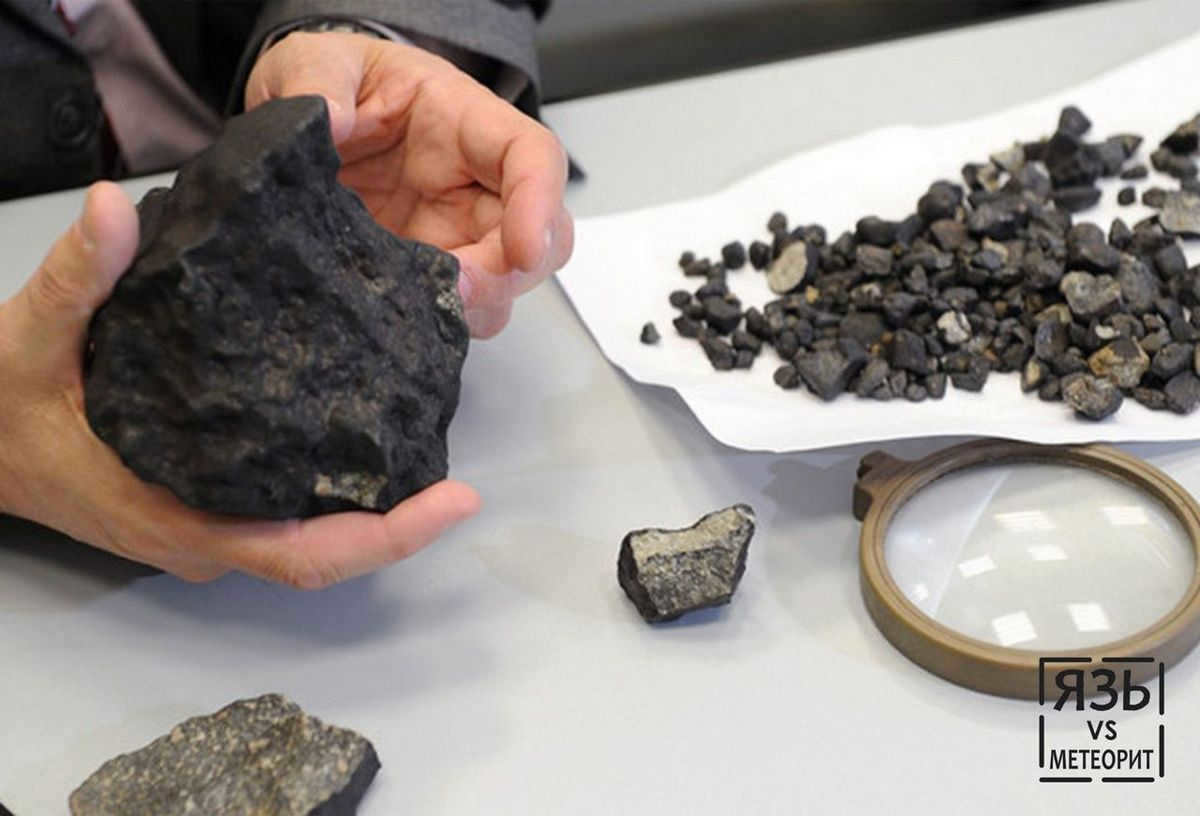

— Has the hole that was dug 10 years ago been filled with sediment?
– Yes, it has, but the amount is unclear. Three meters of sediment have solidified inside the hole. The original shape of the hole has been preserved, but we blocked off the tunnels that led to it to prevent anyone from accidentally falling in. We made a special trip in the winter, even though we weren’t required to do so under the contract. But there will always be plenty of curious people. In the summer, divers of all kinds, experienced and inexperienced, will venture there at the risk of their lives. And I am familiar with how the flight investigation system operates in Russia.
— Did you and your fellow divers take a piece of the meteorite as a memento?
– Maybe they assumed you had caught and sawed your own.
– Well, what can I say… It reflects more on the individuals who hold such beliefs, rather than on us.
– Have you visited the meteorite at the museum?
– We actually went once, sometime after the expedition. There’s no mystery surrounding us. It’s evident that it has a different weight: additional fragments were chipped off and the largest ones were selected. I submitted a stone weighing 654 kilograms. What happened to it during transportation, whether it was sawed or involved in any criminal cases – that’s not our concern.
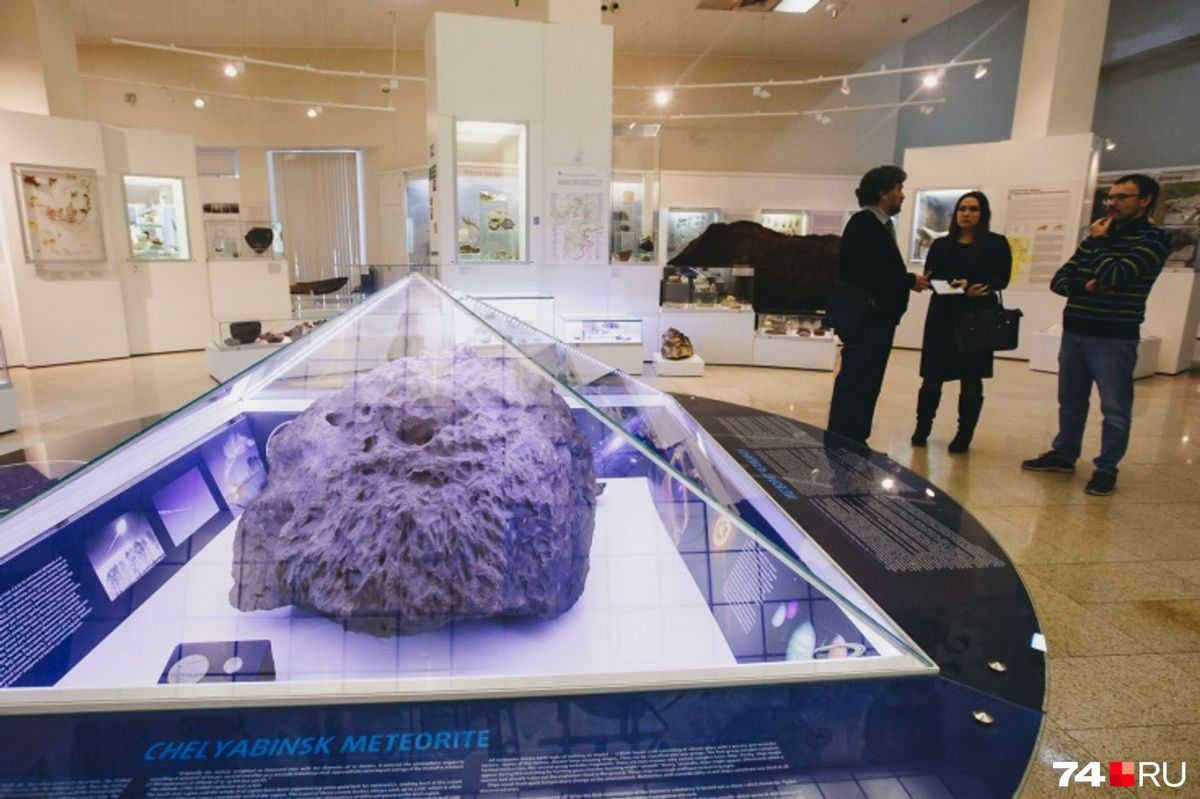

– What made the operation to lift the Chelyabinsk meteorite memorable?
– Our team was exceptional, we tackled all the challenges with enthusiasm and determination. And we did it all without expecting anything in return (laughs). The weather conditions were terrible, and the situation was dire. We were much closer to the limit of acceptable risk at that time than we should have been. Now, ten years later, we have gained more wisdom. If we were to do the same operation again, we would double the safety precautions, work longer hours, and approach it slightly differently.
“Working in cold water is a more enjoyable experience.”
— You mentioned that the price for lifting the meteorite was not sufficient. It was initially reduced from 3 to 1.67 million rubles at the auction. Why did you choose to participate in the auction?
– The cost was completely inadequate considering the complexity of the task, but I had a strong desire to be a part of it. We negotiated a lower price, which turned out to be a great PR move. We had already completed enough work for the year and decided that we could dedicate a couple of months to enhancing our reputation.
— So how did it impact your reputation? How do you feel about the outcome a decade later?
– This is a great tool that saves a lot of time when interacting with customers. Previously, we would often emphasize our professional expertise and reputation as renowned specialists in the field of diving. However, now we simply mention that we discovered the Chelyabinsk meteorite, and all doubts and inquiries vanish.
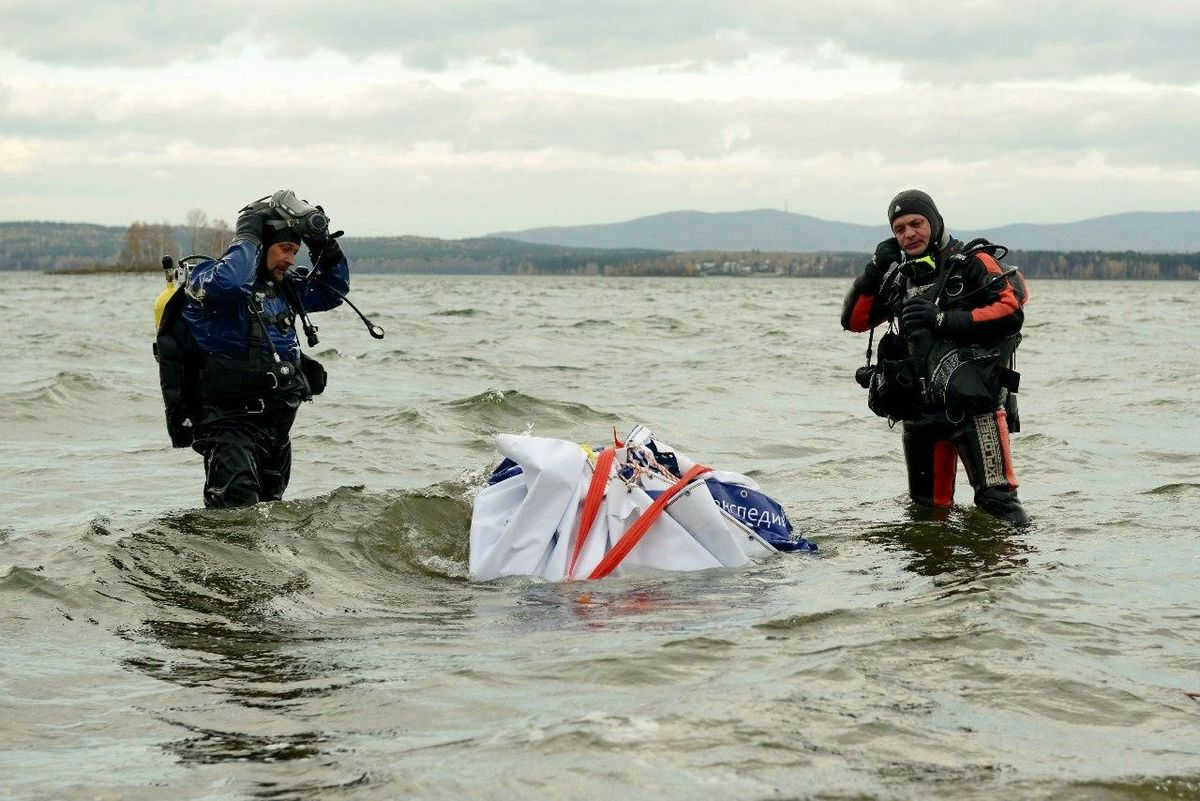
– Have you had the opportunity to capture any other celestial objects?
– We haven’t been able to lift any meteorites, but we did carry out a survey in Lithuania last year. Perhaps in the coming years, if we have enough funding, we will be able to retrieve a Lithuanian meteorite. There is a similar case where a space rock fell into a lake over 100 years ago. However, there is limited information available, so it would require extensive research to locate it.
– Why do they always seem to end up in lakes?
– No, meteorites fall everywhere. They can fall into lakes, especially in winter, and leave distinct marks. That’s why meteorites are constantly sought after in mountains, deserts, and even Antarctica. During the summer, it might be difficult to spot a meteorite falling into a lake. And even if they do, it would be hard to determine the exact location of impact. In our case, we had an accuracy of 4 meters, so we had to put in a lot of effort to find it. But we were confident that it was there.
— Nikolay Eduardovich, besides the meteorite recovery, what other landmark projects have you been involved in?
– We have a portfolio of impressive projects, although not all of them can be disclosed due to contractual obligations. One recent case involved the clearance of a flooded underground tunnel at an aging factory. This tunnel, constructed half a century ago, spans 200 meters in length and lacks any side passages. Remarkably, the water temperature inside the tunnel was below 40 degrees Celsius. Interestingly, working in cold water can be more preferable than warm or hot water, as it allows for better protection against the elements. This particular project was truly exceptional, as it required working both underground and underwater simultaneously, with access through a well. It demanded the expertise of a highly skilled industrial diver!
I am currently in Chile. We had a conversation about the potential for employment while taking a vacation to Atacama, which happens to be the driest desert on the planet. Rainfall occurs only once every few decades in this captivating destination located on the West Coast of South America, a place I have long desired to explore.
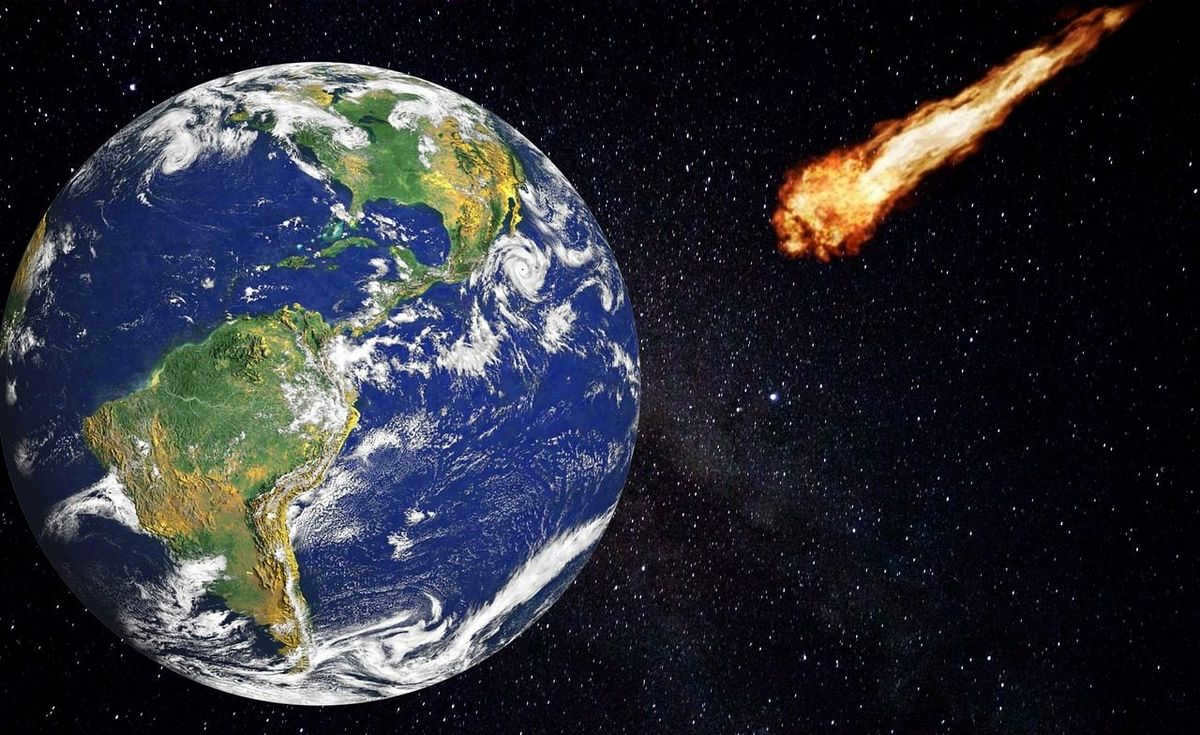
The Chelyabinsk meteorite made impact with the Earth during the early afternoon of February 15, 2013. Numerous theories immediately emerged to explain the event. The explosion resulting from the celestial object’s descent was of such force that it shattered windows in homes, caused damage to buildings, and resulted in over 1000 individuals being hospitalized with injuries of differing degrees of severity.
During this natural catastrophe, the capital of the Southern Urals was subjected to an immense shockwave. Upon analysis, scientists determined that the shockwave resulting from the impact of the celestial object was equivalent to approximately 500 kilotons of TNT. To put this into perspective, the explosion caused by the space visitor’s landing in the lake was twelve times more powerful than the explosion over Hiroshima. The magnitude of this natural force is truly awe-inspiring.
The events in “Chelyabinsk” have refuted the previous belief among scientists that only meteorites with a diameter exceeding one hundred meters pose a danger to humanity.
Overall, around one and a half thousand individuals were affected by the meteorite’s descent. The majority of injuries were due to fragments of shattered glass.
How the meteorite managed to catch everyone off guard.

The flight of the Chelyabinsk meteorite was not recorded by instruments prior to its entry into the atmosphere. This is due to the limitations of modern optical technology, which can only predict the approach of such celestial bodies a few hours before impact. This fact highlights our limited knowledge of the vastness of outer space beyond our home planet.
The sudden appearance of the meteorite, later named “Chelyabinsk,” served as a stark reminder of the serious threat that large meteorite impacts pose to the Earth’s population. Currently, there is no defense against such events, prompting scientists to intensify their research on meteorites.
By studying the craters on both the Earth and the Moon, as well as analyzing the chemical composition of meteorites, scientists have developed theories about the solar system’s history and evolution. These studies have also shed light on the processes that lead to the formation and destruction of celestial bodies of various sizes. It is possible that in the future, humanity will have the capability to defend itself against potential cosmic dangers.
The Chelyabinsk meteorite made its way into the Earth’s atmosphere from an eastern direction. Initially, it weighed around nine to ten thousand tons and had a diameter of 17 meters. The discovery of the “Chelyabinsk” meteorite challenged the previous belief among scientists that only meteorites larger than one hundred meters posed a danger to humanity.
Shortly after its fall, partially melted fragments of the meteorite were found, with a combined mass of approximately 3.5 kilograms. It is highly plausible that the “home” of the Chelyabinsk meteorite is the Main Belt of asteroids, and the celestial body it detached from may have had a diameter of several hundred kilometers.
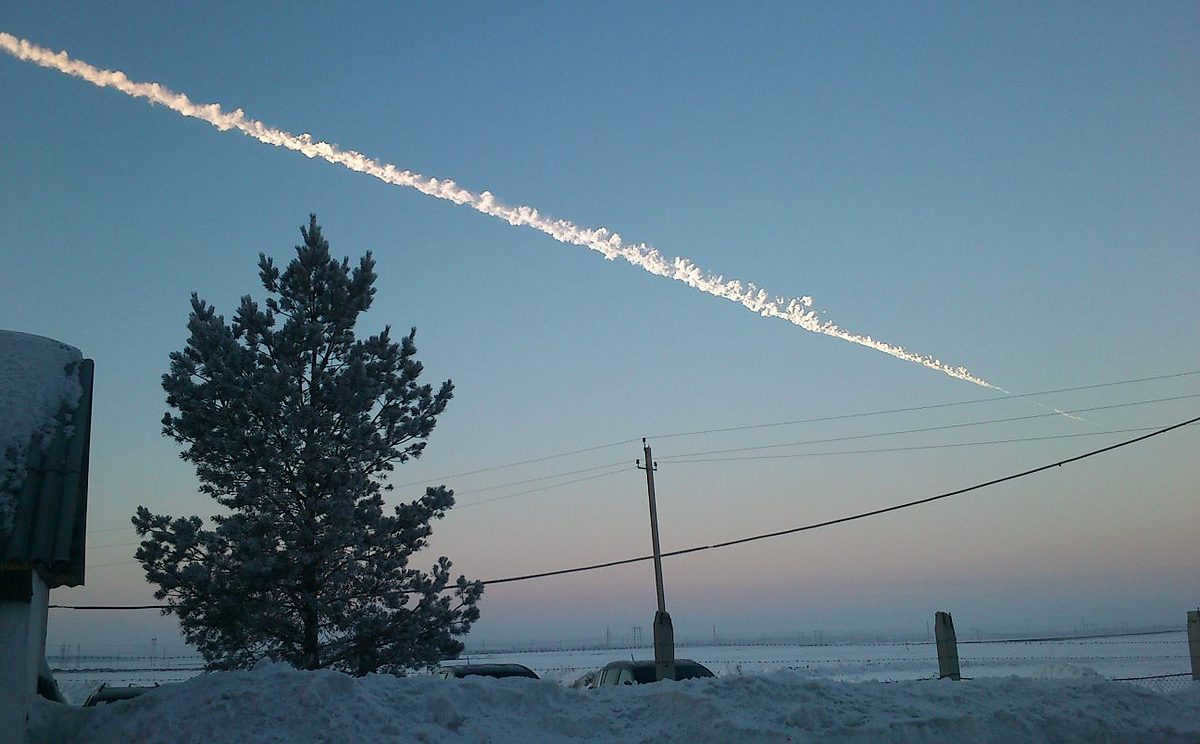
On the 15th of February, 2013, the meteor entered the Earth’s atmosphere. At a distance of approximately 50-30 kilometers from the Earth’s surface, the meteor broke apart into multiple pieces. The shockwaves generated by the rapid movement of the meteor, exceeding the speed of sound, resembled several explosions. Those who had witnessed the Tunguska meteorite fall many years prior observed a similar phenomenon.
Current optical technology is incapable of predicting the approach of such a celestial object more than 2-3 hours before its descent
Particles of the meteorite descended from the sky, creating a meteor shower. Fragments of the “Chelyabinsk” meteorite were discovered throughout the region for an extended period of time.
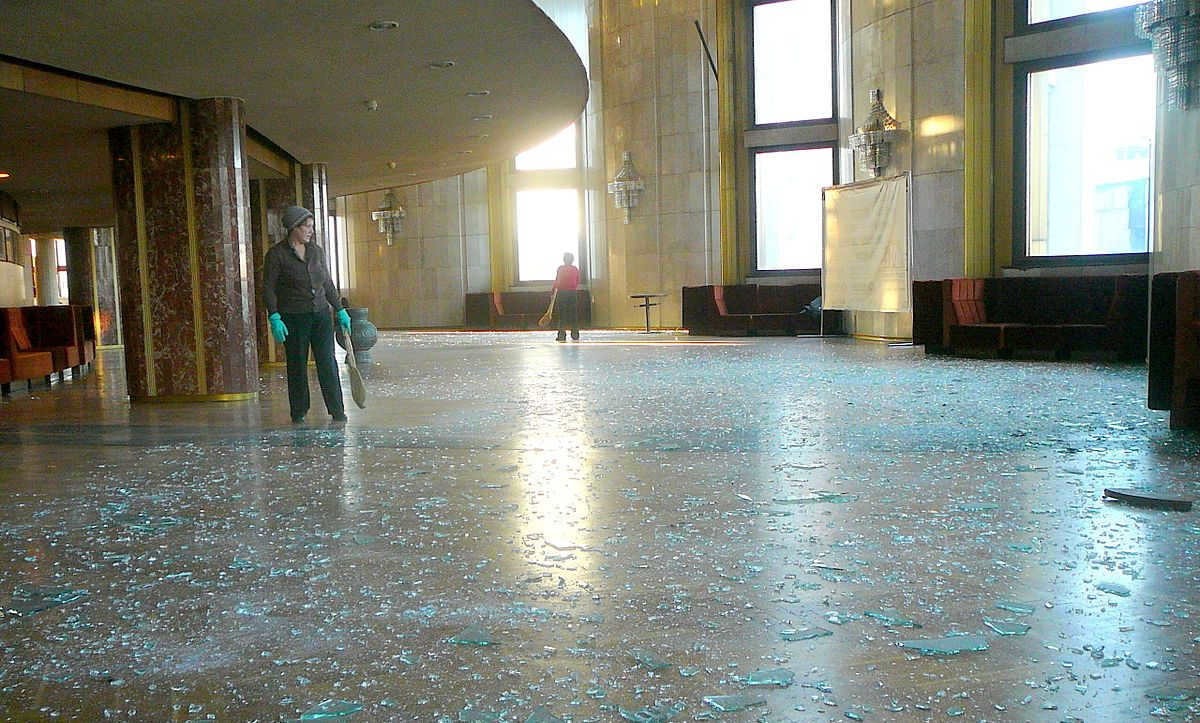
A team led by Mikhail Larionov from the Ural Federal University was involved in studying the meteor that fell. The day after this extraordinary natural event, scientists began searching for debris.
On March 5, 2013, scientists obtained reliable information about the location of the biggest piece of the meteorite – at the bottom of Lake Chebarkul.
On March 18, the meteorite was officially named “Chelyabinsk” in honor of the city.
On October 16, 2013, the largest fragment, weighing over 570 kg, was retrieved from the lake.
Interesting trivia about the Chelyabinsk meteorite
- An exceptional collection of photographs exist that document the sequence of illuminations from the bolide, as well as its path during the descent. These remarkable images were captured by Marat Akhmetvaleev, a talented young photographer from Chelyabinsk.
- The “parent” asteroid, from which the “Chelyabinsk” meteorite originated, is believed to have undergone a collision with another large celestial body. This hypothesis is supported by scientific evidence: the meteorite’s structure has become compromised, displaying numerous fissures that contain remnants of frozen impact melt.
- A fragment of the “Chelyabinsk” meteorite, displayed at the State Historical Museum of the Southern Urals since 2016, is gradually becoming lighter as time passes. It has recently been discovered that the meteorite contains tiny pores that absorbed moisture when it crashed into Lake Chebarkul, and now this moisture is slowly evaporating.
- Chelyabinsk holds a unique distinction as the only city in the world and throughout human history to have experienced a meteorite impact.
- Determining the exact age of the Chelyabinsk meteorite is a complex task. The meteorite originated from a meteor that formed over 4.5 billion years ago, while the meteorite itself is estimated to be around 300 million years old. Additionally, several thousand years ago, “Chelyabinsk” collided with another celestial body, resulting in the formation of cracks.
- The tiny pieces were utilized in the production of gold medals for the Olympics and were awarded to the victors of the Sochi Games on the one-year anniversary of the Chelyabinsk meteorite’s descent – February 15, 2014. A total of 20 commemorative medals containing fragments from the meteorite were crafted for sale to collectors.
- The initial designation of the meteorite was “Chebarkul,” named after the lake where the largest fragment landed.
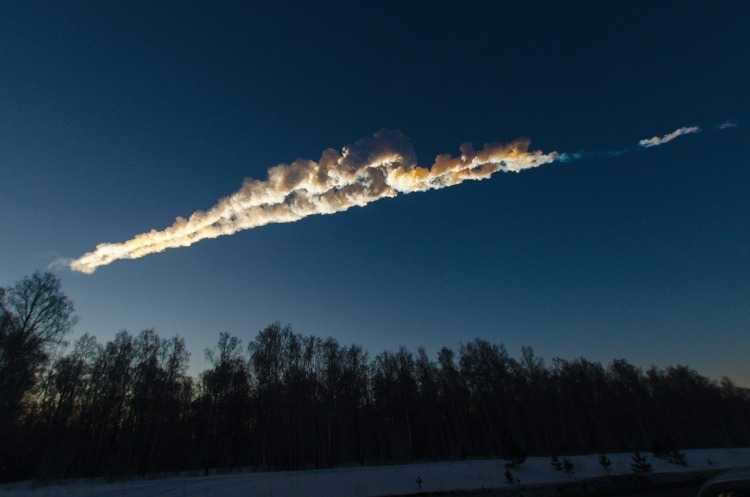
14.02.2018 Correspondent: Ekaterina Salakhova Photo: archive of the Chelyabinsk State Historical Museum
Bacteria are developing on the space visitor exhibited in the museum. Pollution has been detected in Lake Chebarkul, where the meteorite landed, for the past year. The Chelyabinsk bolide also aided in the discovery of a fragment of its cosmic counterpart near the village of Yaratkulova. On the eve of the five-year anniversary of the meteorite fall, scientists shared fresh news about the celestial visitor.
Five years ago, on February 15, 2013, at approximately 9:20 am, a meteorite exploded above Chelyabinsk and then landed in Lake Chebarkul. As we approach the anniversary date, the scientific community in the Southern Urals has revealed the consequences of this catastrophe.
Why you should refrain from touching a space exhibit with your hands
The State Historical Museum in Chelyabinsk houses the largest fragment recovered from Lake Chebarkul on the day of impact. This remarkable exhibit is open to the public and can be accessed by visitors. To enhance the experience, the museum organizes an annual event where attendees are allowed to touch the celestial body.
– Please refrain from touching it! – cautions Sergey Kolisnichenko, a renowned meteorite researcher and geologist. – Have you ever considered the number of people who touch it? In our daily lives, we do not come into contact with so many individuals at once, and we make sure to wash our hands. The meteorite serves as a breeding ground for numerous bacteria that derive nourishment from the minerals and iron it contains. It creates a favorable environment for them to thrive. It should be noted that these bacteria originate from Earth, not outer space. However, their behavior and the effects of touching them remain uncertain..
However, the tiny particles of meteorite that are available for purchase as mementos pose no threat. Following the impact, a total of 1.5 tons of material was gathered, ensuring an ample supply of fragments for all interested parties.
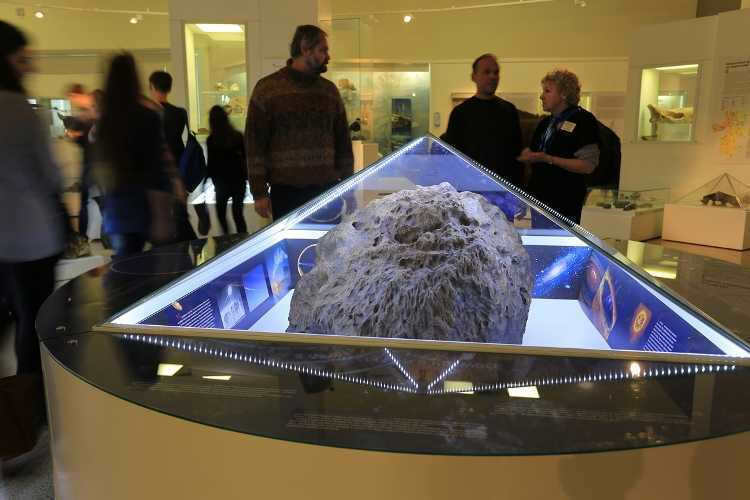
What happened to Lake Chebarkul
As per Sergey Zakharov, a candidate of geographical sciences and the chairman of the Chelyabinsk regional branch of the Russian Geographical Society, the meteorite’s impact had no effect on the water composition of Lake Chebarkul. It is worth mentioning that this lake serves as the city’s source of drinking water.
– During the initial winter season, our research team detected contamination in the water at a depth of two meters from the lake bottom and within a radius of 50-100 meters. However, it was not the meteorite itself that introduced new pollutants into the lake. Rather, these pollutants originated from terrestrial sources, specifically the disturbed silt deposits at the lake bottom. Nitrogen, phosphorus, and manganese began to enter the aquatic environment at an accelerated rate. It is important to note that this was no longer attributed to the meteorite, but rather the individuals who flocked to the lake with magnets in search of fragments from the celestial object,- clarified Sergey Zakharov. explained Sergei Zakharov.
The Chelyabinsk meteorite, retrieved from Lake Chebarkul on October 16, 2013, has a weight of approximately 650 kilograms. The total weight of the collected fragments surpasses 1,300 kilograms.
Additionally, during the initial summer following the autumn incident, there was a noticeable rise in the iron levels within the lake. Nevertheless, the water’s composition returned to its typical state shortly thereafter.
Sergei Zakharov expressed that there are still minute remnants of the meteorite within the lake. However, he believes that it is best not to extract them in order to maintain the enigma and prevent any additional human-induced stress on the lake.
Scientists have yet to determine from which celestial body the Chelyabinsk meteorite originated, as well as the location and timing of the next potential threat. Jokingly, scientists suggest that cities and lakes starting with the letter “h” should be on high alert.
– There seems to be a pattern: meteorites tend to fall near lakes, particularly those starting with the letter “ch”. Lake Cheko, situated in the area where the Tunguska meteorite fell, is a prime example. The Kunashksk meteorite fell into Lake Chebakul, and the Chelyabinsk meteorite landed in Lake Chebarkul. So, Cheboksary, be prepared, quipped Sergei Zakharov.
On a more serious note, the Chelyabinsk meteorite has greatly contributed to scientific research. Meteorite expert Sergei Kolisnichenko pointed out that the Chelyabinsk meteorite has provided valuable insights into the study of other celestial objects. It has, for instance, aided in the identification of a bolide that crashed near the village of Yaratkulova in 1989.
Although meteorites of smaller size fall frequently and evenly across the Earth, events like the Chelyabinsk meteorite have not occurred for five years. These phenomena are often hidden from our view, making it even more challenging to locate fragments. The Chelyabinsk meteorite, which was captured by numerous video recorders and cameras during its fall, may aid in the search for fragments of the enigmatic Tunguska meteorite. This year marks the 110th anniversary of the Tunguska meteorite’s fall, yet efforts to find its fragments have thus far been unsuccessful.
– Many scientists tend to overlook the concept of inertia. The key to finding the Tunguska meteorite lies not in the immediate aftermath of the explosion, but rather 80-100 kilometers away from it. Searching for the Tunguska meteorite in the vicinity of its alleged impact site is akin to searching for the Chelyabinsk meteorite in Chelyabinsk’s Revolution Square. If future research follows the path of our investigation, it will undoubtedly aid in the discovery of the Tunguska meteorite,- the scientist asserts.
Thanks to the analysis of satellite data by Nikolay Gorkavy, we have discovered that the meteorite left behind a trail of dust. Surprisingly, it appears that many other bolides have left similar plumes in their wake.
– People on Earth encountered the meteorite from all angles. This was the first time that a dust ring created by the meteor’s passage could be observed. The meteor was as big as a building with six floors, and most of it disintegrated into dust that spread across the entire planet, – Ph. said Sergei Zamozdra, a candidate of physical and mathematical sciences and an associate professor at the Department of Theoretical Physics at ChelSU.
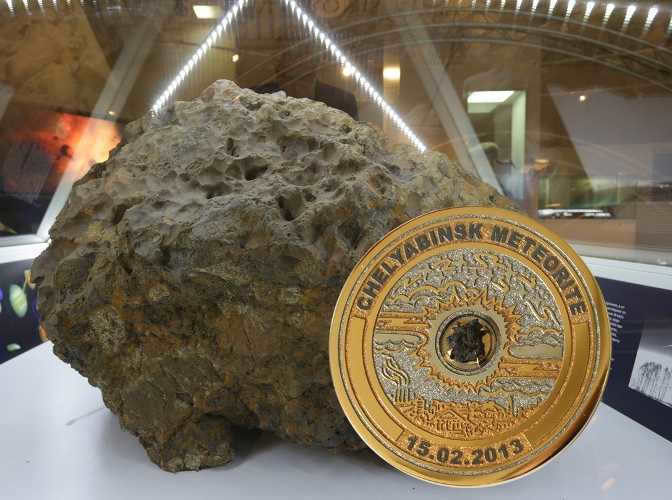
An opportunity missed: Chelyabinsk’s failure to capitalize on the historic meteorite fall
Nikolai Antipin, a candidate of Historical Sciences and Deputy Director of the United State Archive of the Chelyabinsk region, believes that the fall of the Chelyabinsk meteorite is a monumental event that will be remembered for generations to come. Presently, the regional archive houses a collection of documents recounting the meteorite fall, including songs and poems dedicated to this extraordinary occurrence.
72 hours after the meteorite impact, over 400 videos had already been uploaded, accumulating a staggering 100 million views across various global networks in record time.
Nevertheless, Nikolai Antipin argues that we failed to fully exploit this extraordinary event and were unable to leverage it for the development of the tourism industry.
– There was a lot of discussion in 2015 about capitalizing on this phenomenon for the advancement of tourism. Indeed, the meteorite became an attraction in the museum, and there were various souvenirs like postcards and printed materials available. Several books were published about the meteorite, including the popular science book “Chelyabinsk Superballid” and the collection of scientific articles “Chelyabinsk Meteorite – one year on Earth”. Visitors even had the opportunity to purchase a piece of the meteorite as a souvenir. However, I believe that it was not just about printing and selling merchandise, but rather something more substantial. It was necessary to establish a comprehensive infrastructure that would encourage tourists to visit the meteorite site for research purposes. Unfortunately, the tourism industry did not experience significant growth as a result of this event, mainly due to the lack of infrastructure,” – Antipin commented.

